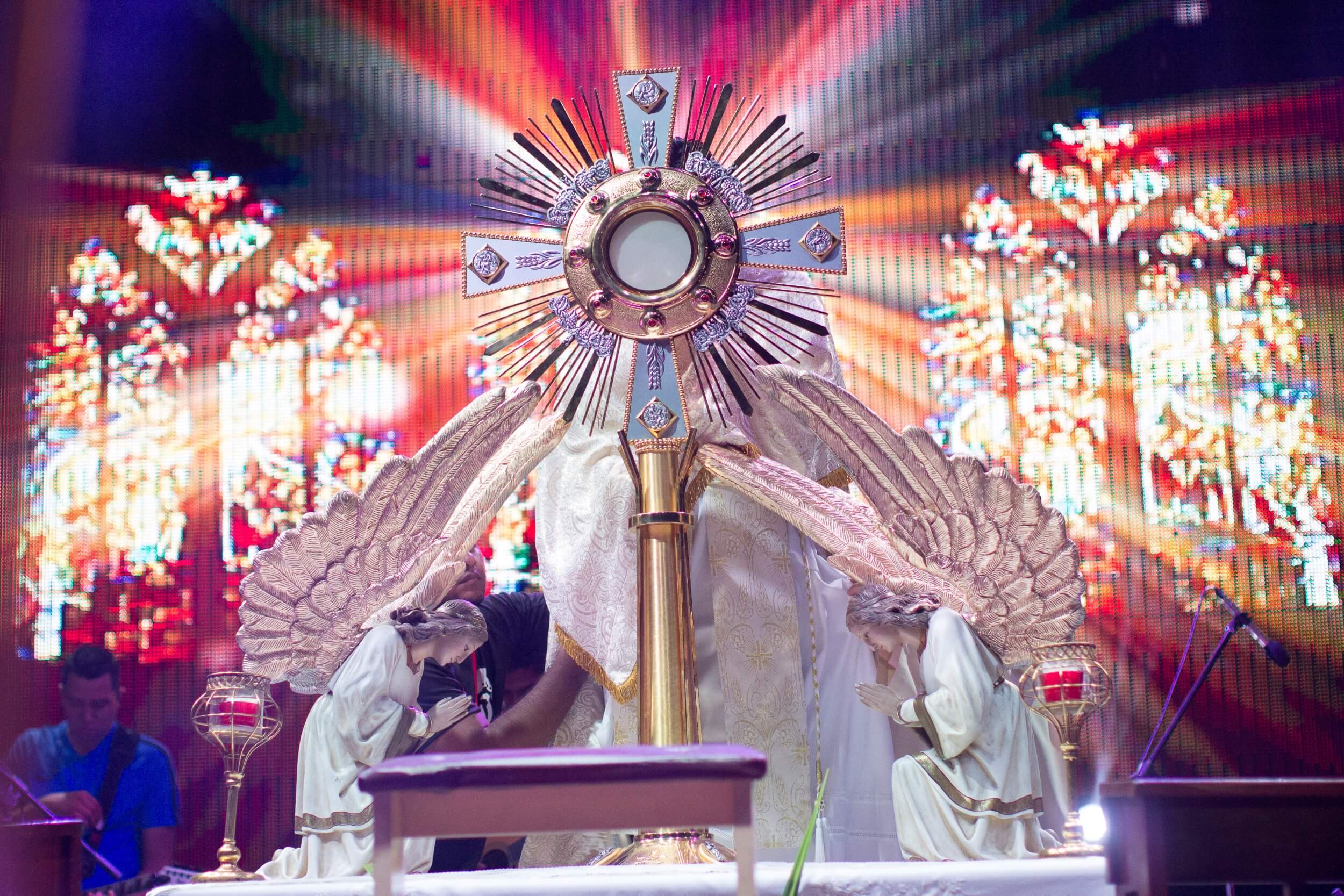In addition to the 7 Sacraments, the Church recognizes many ways to experience God’s grace through physical means. Although God’s saving grace (salvation) comes to us through the 7 Sacraments, yet we receive additional grace through sacramentals such as the rosary, the use of holy water, the Chaplet of Divine Mercy, the Liturgy of the Hours and other pious practices.
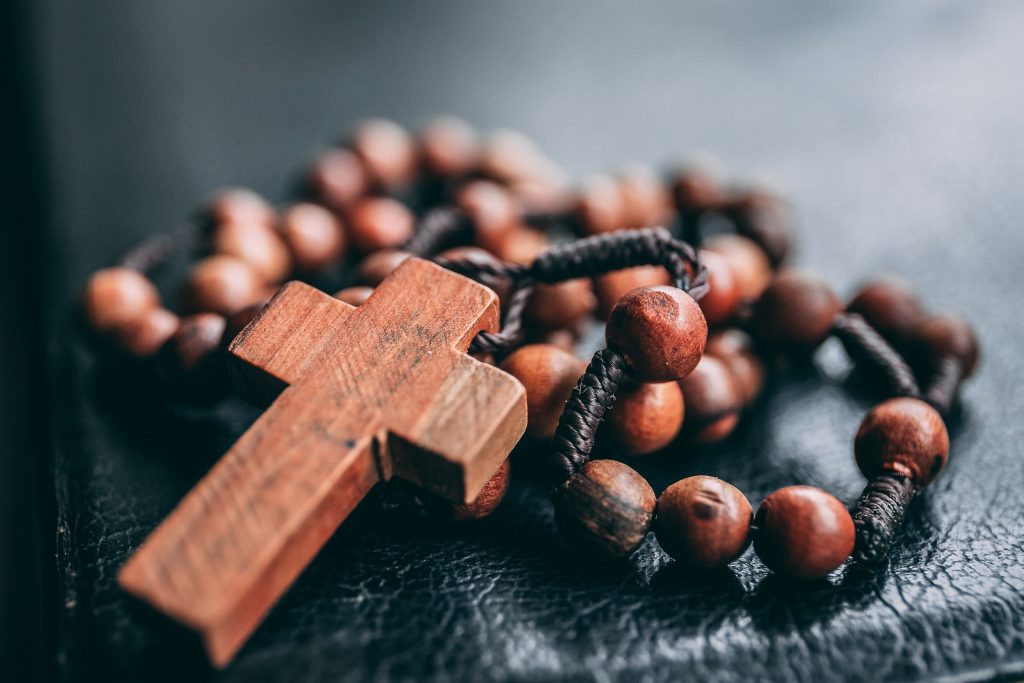
The Rosary
The Holy Rosary is a meditative prayer centering around the sacred mysteries of our Lord Jesus Christ and his Immaculate Mother, Mary.
The Holy Rosary is prayed in the parish every day after the 7:00 am mass, before the 5:15 pm mass (4:45 pm for pro-life) on every Thursday, 1st Friday of the month, and in Spanish on Monday, at 7:00 pm, Tuesdays at 6:00pm and Thursdays at 10:00am.
More information on how to pray the rosary can be found here.

Eucharistic Adoration
What is Eucharistic Adoration?
Eucharistic Adoration is adoring or honoring the Eucharistic Presence of Christ. In a deeper sense, it involves “the contemplation of the Mystery of Christ truly present before us”.
During Eucharistic Adoration, we “watch and wait”, we remain “silent” in His Presence and open ourselves to His Graces which flow from the Eucharist … By worshiping the Eucharistic Jesus, and we become what God wants us to be! Like a magnet, The Lord draws us to Himself and gently transforms us.
The Eucharist is: Jesus truly present – Body, Blood, Soul, and Divinity!
At the moment of Consecration, during the Mass, the “gifts” of bread and wine are transformed (transubstantiated) into the actual Body and Blood of Christ, at the Altar. This means that they are not only spiritually transformed, but rather are actually (substantially) transformed into the Body and Blood of Christ. The elements retain the appearance of bread and wine, but are indeed the actual Body and Blood of Christ. This is what is meant by Real Presence: the actual, physical presence of Jesus in the Eucharist.
The (reserved) Blessed Sacrament serves as a focal point of devotion.
Because, as Catholics, we believe that Christ is truly and substantially present in the Eucharist, the Blessed Sacrament is given the same adoration and devotion that is accorded to Christ.
At the beginning of the exposition of the Blessed Sacrament, a priest or deacon removes the sacred host from the tabernacle and places it in the Monstrance on the Altar for adoration by the faithful. “Monstrance” is the vessel used in the Church to display the consecrated Eucharistic Host, during Eucharistic adoration or benediction. The word monstrance comes from the Latin word monstrare, meaning “to expose”. It is known in Latin as an Ostensorium. When a consecrated host is placed in the monstrance, it is said to be a solemn exposition.
When the Monstrance contains the Sacred Host, the priest does not touch it with his bare hands, but instead, holds it with a humeral veil, a wide band of cloth that covers his shoulders (humera) and has pleats on the inside in which he places his hands.
At all other times, the reserved Sacrament is kept locked in the Tabernacle, so that the faithful may pray in the presence of the Sacrament.
“Perpetual Adoration” is Eucharistic Adoration round the clock (that is, twenty-four hours a day). A “Holy Hour” is “Eucharistic Adoration of Reparation” which lasts for about an hour.
Normally are Adorations are every 2nd and 4th Tuesday of each month. Tuesday 7 am – Wednesday 7 am.
During the Covid, we are having Adoration on 4th Tuesday of each month – 7:30 am-7 pm
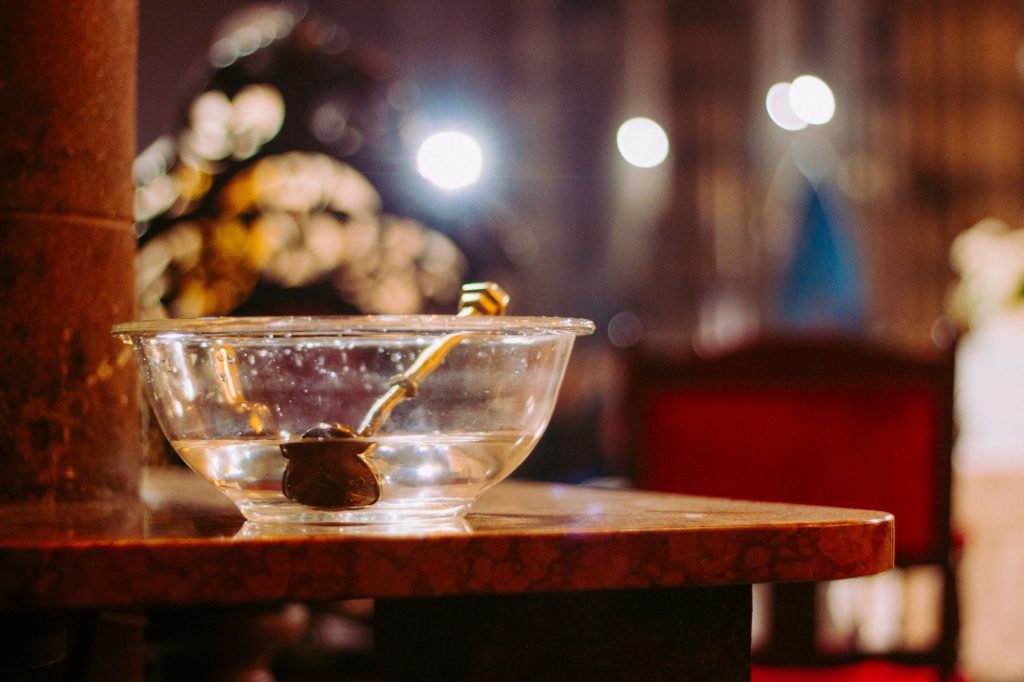
Holy Water
Using holy water calls to mind our baptism, the beginning of our lives as Christians and our entrance into the life of Christ. Holy water is often used in times of temptation, before storms and in the blessing of objects in order to call to mind God’s blessing and protection in our lives.
During the pandemic Covid, our Holy Water fonts are not avaible. If you want Holy Water, please bring a bottle and ask any of the Fathers or Deacons to bless the water.
Holy water fonts are at each door of the church. A large container of holy water is available for individual use. It is located in the south alcove, next to the candles and the statue of Our Lady of Guadalupe. Please bring your own individual containers.
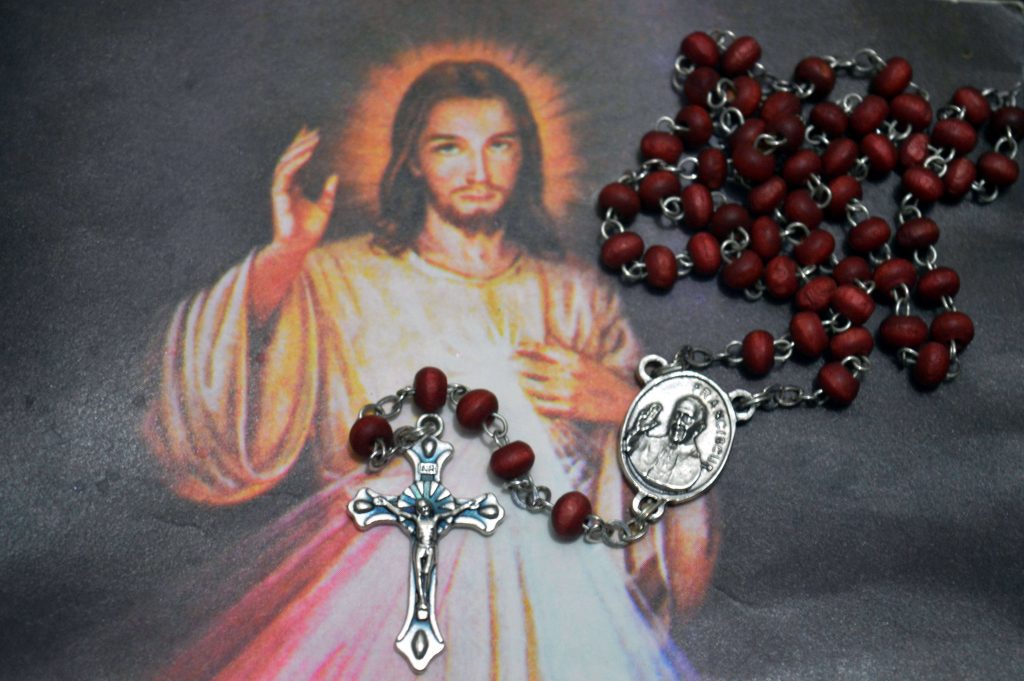
Chaplet of Divine Mercy
In a vision to St. Maria Faustina Kowalska in 1935, the Lord revealed a powerful prayer the He wanted everyone to say–the Chaplet of Divine Mercy. He promised extraordinary graces to those who would recite it. The chaplet is prayed using rosary beads and is a litany of prayer the most merciful God who sent us His Son as a redeeming sacrifice.
The Chaplet of Divine Mercy is said on the 2nd Tuesday of the month at 1:00 pm.
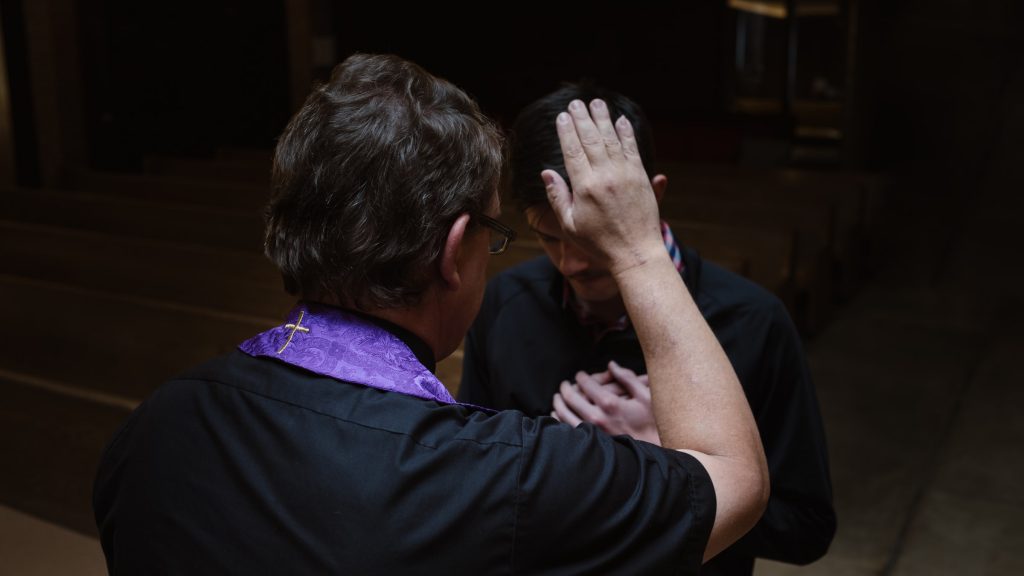
Blessings
Catholics and catechumens are encouraged to ask for blessings at certain times. Examples are: before a trip, before a major event, blessing of a home, fields or animals, blessing of religious objects or images. Blessings are usually given by a priest or deacon and are a sign of God’s blessing imparted in our lives. Parents may bless their own children by signing a cross on the forehead.
Blessings can be done at any appropriate time; please contact the priest or deacon directly. A blessing of pets is usually held around St. Francis of Assisi’s feast day, October 4th. Candles are traditionally blessed on February 2nd (the Feast of the Presentation of the Lord). Throats are blessed on or around February 3rd (the Feast of St. Blase). Car blessings are held occasionally.
The proper way to dispose of a blessed object is by burning or burying it.
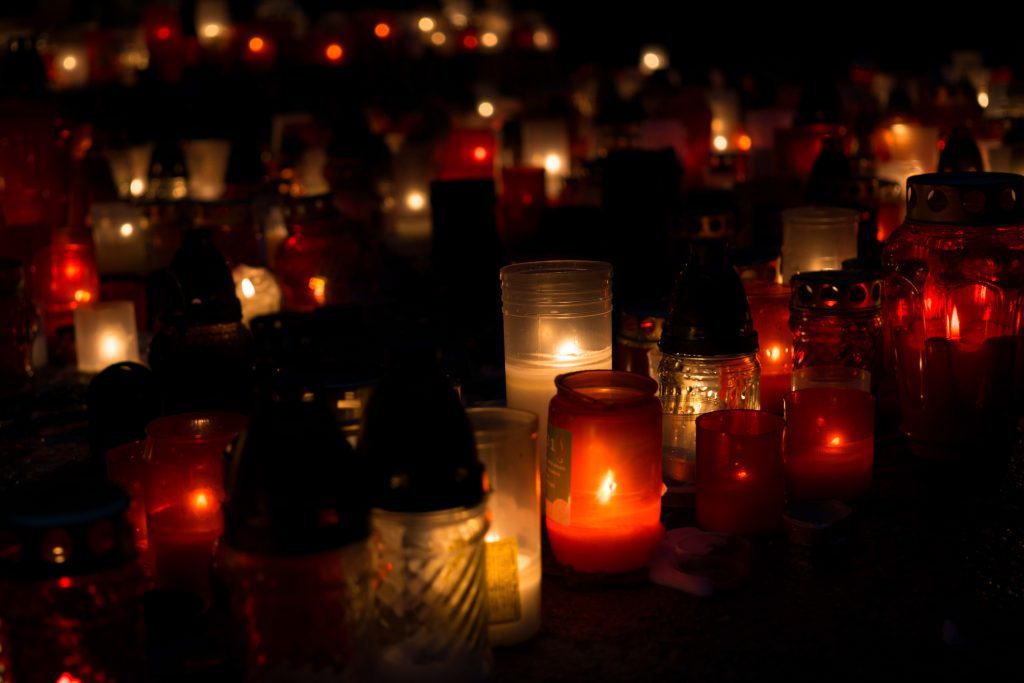
Candles
The flame of a candle represents the presence of the Lord and the constant prayer of his people. Oftentimes a person will light a candle as a sign of their prayer before God. Just as the candle slowly burns and lights the room, so the person’s prayer continues even through night and darkness.
A vigil candle is always seen next to the tabernacle, showing that Christ is present in the Blessed Sacrament.
Devotional candles are available for use at home or in the church. They are located in the alcoves of the Cathedral for a suggested donation.

Quinceañeras
A Quinceañera is a coming-of-age ceremony for a 15-year-old girl. Originating in Mexico, it is a popular devotional practice to have a Quinceañera mass in addition to the usual festivities.
The United States Conference of Catholic Bishops (USCCB) and St. Mary’s Cathedral regulate the celebration of Quinceañera masses. See the Cathedral’s rules (English, Spanish). A deposit is required to reserve a date; non-parishioners are charged at a higher rate. The girl is required to be in Religious Education classes and a special Quinceañera class. Parents should begin planning at least one year in advance. For more information, please speak with our bilingual secretary at (308) 384-2523 ext. 221.


